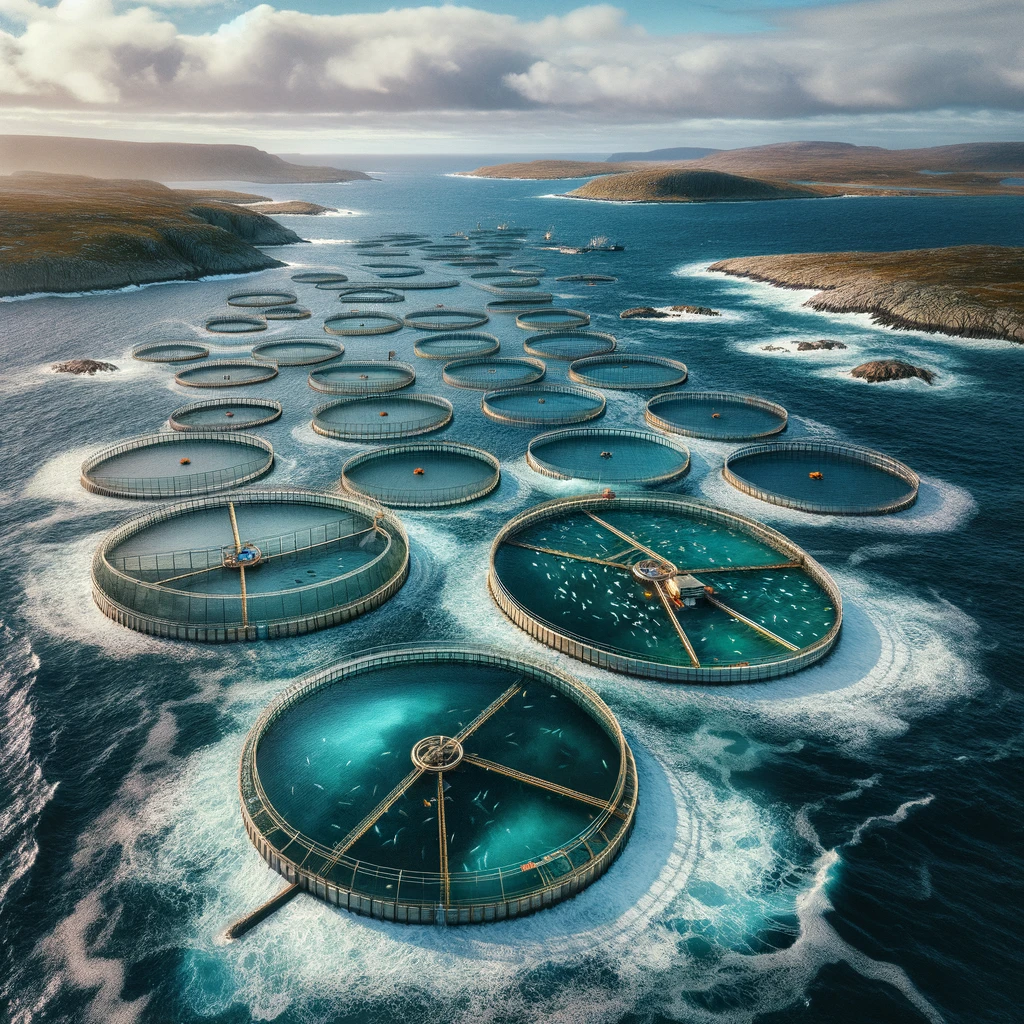
The health impact of consuming farm-raised salmon is multifaceted and depends on various factors such as the type of feed used in aquaculture and the geographical location of the farm.
Studies have shown that farmed salmon fed on rapeseed oil, as opposed to traditional fish oil, can still provide significant health benefits. Consumption of such salmon has been associated with increased omega-3 index and vitamin D status, and decreased plasma triacylglycerols, suggesting potential cardiovascular benefits.
However, concerns have been raised about the higher levels of organic contaminants, such as polychlorinated biphenyls and dioxins, found in farmed salmon compared to wild salmon, particularly those farmed in Europe. These contaminants may pose health risks that could potentially offset the beneficial effects of fish consumption.
Nevertheless, a Canadian study found that the concentrations of these contaminants in both farmed and wild salmon were generally low, and the regular consumption of these fish would not cause tolerable daily intakes to be exceeded.
A benefit-risk analysis suggested that the risk of exposure to contaminants in farmed and wild salmon is partially offset by the health benefits associated with fatty acid intake. However, certain populations, such as young children, women of child-bearing age, pregnant women, and nursing mothers, may wish to minimize contaminant exposure by choosing the least contaminated wild salmon or other sources of omega-3 fatty acids.
While there are potential health risks associated with the consumption of farm-raised salmon due to higher levels of certain contaminants, these risks may be balanced by the nutritional benefits of salmon, particularly those related to omega-3 fatty acid intake. The overall health impact can depend on factors such as the type of feed used in farming and the geographical location of the farm.
Farmed Atlantic salmon have been found to contain higher levels of total lipid, averaging 16.6%, compared to wild Pacific salmon, which average 6.4%.[1] The ratio of omega-3 (n-3) to omega-6 (n-6) fatty acids is approximately 10 in wild salmon and 3-4 in farmed salmon.[1] Farmed salmon are a significant source of n-3 fatty acids, but they also contain higher concentrations of organochlorine compounds such as polychlorinated biphenyls (PCBs), dioxins, and chlorinated pesticides compared to wild salmon.[1-2]
The lipid-adjusted contaminant levels, specifically for toxaphene, dioxin, dieldrin, and PCBs, are significantly higher in farmed Atlantic salmon than in wild Pacific salmon.[1]European-raised salmon have been reported to have significantly greater contaminant loads than those raised in North and South America.[2]
Despite these differences, the consumption of both farmed and wild salmon can contribute to achieving recommended levels of n-3 fatty acids, such as eicosapentaenoic acid (EPA) and docosahexaenoic acid (DHA), without exceeding tolerable daily intakes for noncarcinogenic risk.[3] However, achieving the recommended level of EPA+DHA intake solely from salmon consumption while maintaining an acceptable level of carcinogenic risk may not be possible.[3]
In terms of specific fatty acid content, farmed Atlantic salmon and wild Atlantic salmon have been shown to have similar levels of lipid and n-3 highly unsaturated fatty acids (HUFA), although total n-3 and n-6 polyunsaturated fatty acids (PUFA) were significantly higher in farmed Atlantic salmon.[4] Farmed rainbow trout contained more fat and less n-3 PUFA than wild rainbow trout.[4]
In summary, farmed salmon have higher fat content and a lower n-3 to n-6 ratio compared to wild salmon, and they also contain higher levels of certain contaminants.However, both farmed and wild salmon can contribute to dietary intake of beneficial n-3 fatty acids.
1.
Lipid Composition and Contaminants in Farmed and Wild Salmon.
Hamilton MC, Hites RA, Schwager SJ, et al.
Environmental Science & Technology. 2005;39(22):8622-9. doi:10.1021/es050898y.
Top Journal
2.
Global Assessment of Organic Contaminants in Farmed Salmon.
Hites RA, Foran JA, Carpenter DO, et al.
Science (New York, N.Y.). 2004;303(5655):226-9. doi:10.1126/science.1091447.
Top Journal
3.
Quantitative Analysis of the Benefits and Risks of Consuming Farmed and Wild Salmon.
Foran JA, Good DH, Carpenter DO, et al.
The Journal of Nutrition. 2005;135(11):2639-43. doi:10.1093/jn/135.11.2639.
4.
Blanchet C, Lucas M, Julien P, et al.
Lipids. 2005;40(5):529-31. doi:10.1007/s11745-005-1414-0.